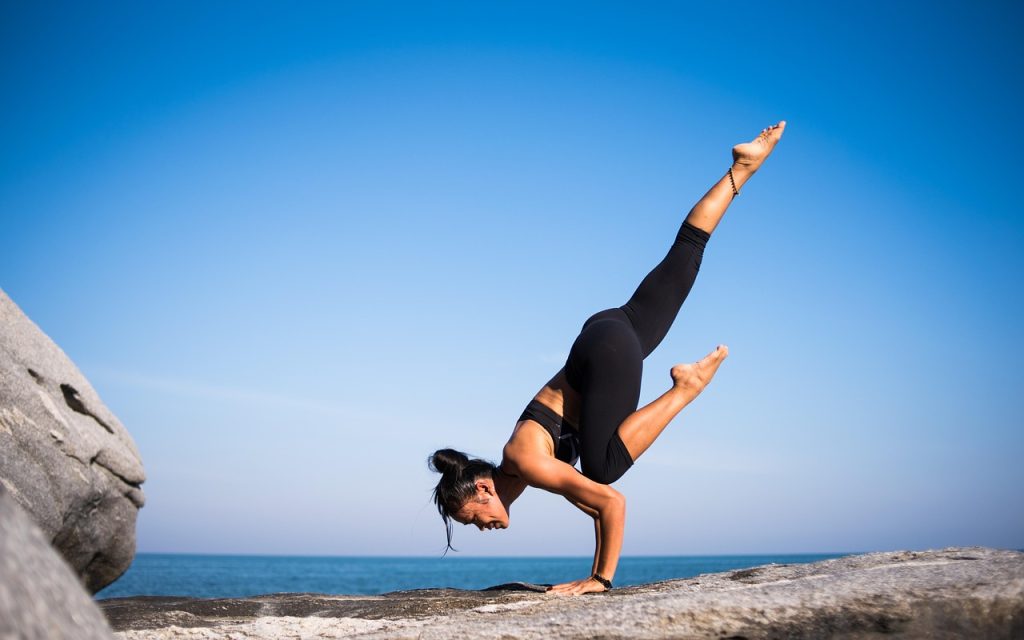How to Improve Your Balance: A Complete Guide to Better Stability and Coordination
Balance is a fundamental aspect of physical health that many of us take for granted until we start to notice it declining. Whether you’re an older adult looking to reduce fall risk, an athlete seeking enhanced performance, or simply someone wanting to move through life with greater confidence, learning how to improve your balance can significantly enhance your quality of life.
Why Balance Matters
Good balance is essential for nearly every movement we make, from walking up stairs to reaching for items on high shelves. As we age, our balance naturally declines due to changes in muscle strength, joint flexibility, and sensory systems. However, the encouraging news is that balance is a skill you can actively develop and maintain at any age.
Understanding How Balance Works
Before exploring how to improve your balance, it’s helpful to understand the three systems your body uses to maintain stability:
Vestibular system: Located in your inner ear, this system detects head position and movement.
Visual system: Your eyes provide crucial information about your body’s position relative to your surroundings.
Proprioceptive system: Sensory receptors in your muscles and joints tell your brain where your body is in space.
When these systems work together efficiently, you maintain good balance. Training can strengthen all three systems simultaneously.

How to Improve Your Balance at Home
1. Single-Leg Stance
One of the most straightforward ways to improve your balance is practising standing on one leg.
How to perform:
- Stand near a wall or sturdy chair for support
- Lift one foot off the ground, bending your knee slightly
- Hold for 10-30 seconds
- Switch legs and repeat
- Aim for 3 repetitions per leg
Progression: Once comfortable, try closing your eyes or standing on an unstable surface like a cushion.
2. Heel-to-Toe Walk
This exercise, also known as tandem walking, challenges your balance whilst improving coordination.
How to perform:
- Walk in a straight line, placing the heel of one foot directly in front of the toes of the other
- Take 20 steps forward
- Turn around and repeat
- Keep your arms out to the sides for balance if needed
3. Standing Marches
This dynamic movement improves balance whilst building leg strength.
How to perform:
- Stand tall with feet hip-width apart
- Lift one knee up towards your chest
- Lower it slowly and repeat with the other leg
- Continue alternating for 20 repetitions
- Progress by holding each knee lift for 2-3 seconds
4. Single-Leg Deadlift
This exercise is excellent for improving balance whilst strengthening your legs and core.
How to perform:
- Stand on one leg with a slight bend in your knee
- Hinge forward at the hips, extending your other leg behind you
- Reach your hands towards the floor
- Return to standing position
- Complete 10 repetitions per leg
5. Clock Reaches
This exercise challenges your balance in multiple directions.
How to perform:
- Stand on one leg
- Imagine you’re standing in the centre of a clock
- Reach your free leg towards 12 o’clock, then 3 o’clock, then 6 o’clock
- Return to centre between each reach
- Complete the sequence 5 times per leg
6. Tai Chi Movements
Tai Chi is renowned for being one of the most effective practices for how to improve your balance.
Basic movement:
- Stand with feet shoulder-width apart
- Slowly shift your weight from one foot to the other
- Move your arms in slow, flowing motions
- Focus on controlled, deliberate movements
- Practise for 5-10 minutes daily
Advanced Balance Training Techniques
Once you’ve mastered the basics of how to improve your balance, consider these more challenging options:
Balance board training: Using a wobble board or balance disc adds instability, forcing your stabilising muscles to work harder.
Yoga poses: Positions like tree pose, warrior III, and eagle pose specifically target balance whilst improving flexibility and strength.
Bosu ball exercises: This half-dome equipment creates an unstable surface ideal for advanced balance training.
Agility drills: Lateral movements, quick direction changes, and hopping exercises enhance dynamic balance.
Lifestyle Factors That Affect Balance
Understanding how to improve your balance extends beyond exercises. Several lifestyle factors play crucial roles:
Regular physical activity: Staying active maintains muscle strength and joint flexibility, both essential for good balance.
Proper footwear: Shoes with good support and non-slip soles can significantly impact your stability.
Home safety: Removing trip hazards, ensuring good lighting, and installing handrails can prevent falls whilst you work on improving balance.
Vision checks: Regular eye examinations ensure your visual system contributes effectively to your balance.
Medication review: Some medications can affect balance as a side effect. Discuss any concerns with your GP.
Adequate sleep: Fatigue impairs balance and reaction times, making quality sleep essential.
Creating Your Balance Training Routine
To effectively improve your balance, consistency is key. Here’s how to structure your practice:
Frequency: Aim for balance exercises 3-5 times per week, or incorporate brief balance challenges into your daily routine.
Duration: Start with 10-15 minute sessions and gradually increase as you build confidence.
Progression: Begin with basic exercises near a support, then gradually reduce support and add complexity.
Variety: Mix different types of balance exercises to challenge your body in various ways.
Integration: Incorporate balance challenges into everyday activities, such as standing on one leg whilst brushing your teeth.
Safety Considerations When Learning How to Improve Your Balance
Whilst balance training is generally safe, taking precautions is important:
- Always practise near a stable surface you can grab if needed
- Clear the area of obstacles and trip hazards
- Wear appropriate, non-slip footwear or practise barefoot on a non-slip surface
- Start with easier variations and progress gradually
- Never push through pain or dizziness
- Consider working with a physiotherapist if you have significant balance concerns
Benefits of Improved Balance
Regular balance training offers numerous benefits beyond fall prevention:
- Enhanced athletic performance and agility
- Improved posture and body awareness
- Reduced risk of injuries
- Greater confidence in daily activities
- Better core strength and stability
- Improved cognitive function through mind-body connection
- Enhanced quality of life and independence
Special Considerations for Different Age Groups
Younger adults: Focus on dynamic balance and sport-specific movements to enhance athletic performance and prevent injuries.
Middle-aged adults: Maintain balance through regular exercise, as this is when natural decline often begins.
Older adults: Prioritise fall prevention through gentle, supported exercises and consider joining balance-focused classes.
Complementary Practices
Several activities naturally incorporate balance training:
Pilates: Strengthens core muscles essential for stability whilst challenging balance through controlled movements.
Dance: Whether ballroom, ballet, or contemporary, dancing requires and develops excellent balance.
Swimming: The resistance of water challenges balance whilst being low-impact and joint-friendly.
Hiking: Navigating uneven terrain naturally improves proprioception and balance.
Martial arts: Practices like karate, judo, and aikido develop exceptional balance alongside other physical skills.
Tracking Your Progress
Monitoring improvement helps maintain motivation when learning how to improve your balance:
- Time how long you can hold a single-leg stance
- Count consecutive heel-to-toe steps without wobbling
- Note when you can progress to more challenging variations
- Record any improvements in daily activities or sports performance
- Keep a training journal to identify what works best for you
Common Mistakes to Avoid
Holding your breath: Remember to breathe naturally throughout balance exercises.
Tensing up: Excessive tension makes balance harder. Stay relaxed whilst maintaining engagement.
Skipping the basics: Master fundamental exercises before progressing to advanced variations.
Inconsistent practice: Sporadic training won’t yield significant improvements. Regularity is essential.
Ignoring other fitness components: Balance improves best when combined with strength, flexibility, and cardiovascular training.
Conclusion
Learning how to improve your balance is an investment in your long-term health, independence, and quality of life. Whether you’re 25 or 85, consistent balance training can enhance your stability, reduce injury risk, and boost your confidence in daily activities. Start with simple exercises, progress gradually, and make balance training a regular part of your fitness routine. With patience and persistence, you’ll notice meaningful improvements in your balance and overall well-being.
Medical Disclaimer
Important: The information provided in this article is for educational and informational purposes only and is not intended as a substitute for professional medical advice, diagnosis, or treatment. Always seek the advice of your GP, physiotherapist, or other qualified healthcare provider with any questions you may have regarding balance problems or any medical condition.
If you experience sudden balance problems, dizziness, vertigo, unexplained falls, or balance difficulties accompanied by other symptoms such as vision changes, numbness, weakness, or difficulty speaking, seek immediate medical attention. These could be signs of serious medical conditions requiring urgent care.
Before beginning any new exercise programme, particularly if you have a history of falls, balance disorders, neurological conditions, cardiovascular disease, or any other health concerns, consult with a healthcare professional to ensure the exercises are appropriate for your individual circumstances. Some balance problems may require specific medical treatment or specialist intervention.
The exercises and advice described in this article may not be suitable for everyone, and individual results may vary. If any exercise causes pain, dizziness, or discomfort, stop immediately and consult a healthcare professional. This article does not replace professional assessment by a qualified physiotherapist or occupational therapist, especially for individuals with significant balance impairments or high fall risk.
